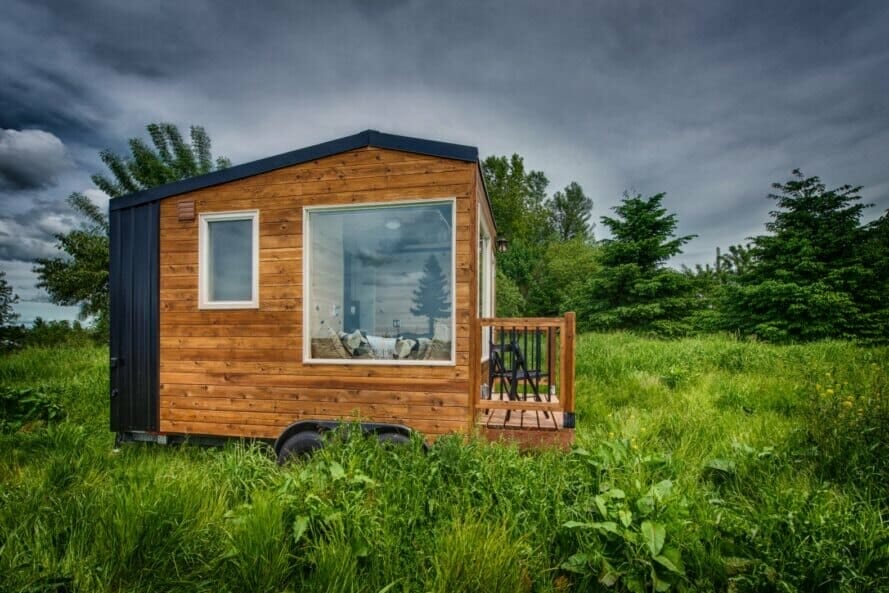Just beside GineersNow head office is the world’s tallest building is the Burj Khalifa found in MBR Boulevard, Emaar Square, Downtown Dubai in the United Arab Emirates. The 828-meter tower started construction on September 2004 and opened on January 2010. Much of the materials used in this building are concrete, steel, composites, and glass, which are the usual composition of a skyscraper construction.
Runner-ups for the world’s tallest building are the 632-meter Shanghai Tower and the 541.3-meter One World Trade Center. Both are also made from the mentioned materials.
But a civil engineer like me could not help but think: how long should one go through the world’s tallest buildings list to find one structure having wood as its primary material?
Far too long, perhaps, as I discovered that it takes more than 15 of the tallest wooden building to be as high as the Burj Khalifa.
The wooden skyscraper I am talking about is called the Brock Commons, which is currently the world’s tallest at 53 meters tall. It is a dormitory for students of the University of British Columbia in Vancouver.

Source: Canada Wood
Other than holding the record for the tallest wooden building, an amazing feat of construction has been delivered by engineers of this structure: after the prefabricated elements were delivered on-site, it only took them less than 70 days to complete the building work.
Of course it is not a hundred percent wood. Brock Commons is a wood, steel, and concrete hybrid, the only project of its kind taller than 14 storeys in the world.
It has a concrete podium and two concrete cores, with 17 storeys of cross-laminated-timber floors supported on glue-laminated wood columns. The cladding for the façade is made with 70% wood fiber.

Source: Seagate Structures
 Source: KK Law
Source: KK Law
The university is obsessed with using wood in its structures. Five other buildings in its Vancouver campus are primarily wood, including the AMS Student Nest, the Engineering Student Centre, the Centre for Interactive Research on Sustainability, the Bioenergy Research and Demonstration Facility, and the Earth Sciences building.
UBC President Santa J. Ono said in a statement, “Wood is increasingly recognized as an important, innovative and safe building material choice. This new tall wood building reflects UBC’s leadership in sustainable construction and our commitment to providing our students with more on-campus housing.”
Cees de Jager, general manager of the Binational Softwood Lumber Council, agreed by saying, “Taller wood buildings offer tremendous economic and environmental benefits. The lessons learned at Brock Commons will help transform the built environment in Canada and around the world. In fact, we are already seeing interest in the systems used here for projects in the U.S., Japan and China.”
Architects and engineers have a crucial role in promoting the use of wooden buildings, as doing so helps in staving off global warming.
According to a research by Chad Oliver, a forest ecologist at Yale University, the building industry could curb up to 31% of global carbon emissions by substituting concrete and steel with wood from sustainably managed forests.
It is estimated that the impact of using wood in construction is a reduction of 2,432 metric tonnes of carbon dioxide, which is equivalent of taking around 500 cars off the road for a year.
“It’s the plywood miracle,” said Christopher Schwalm, an ecologist at Woods Hole Research Center in Falmouth, Massachusetts. “This is something that could have a significant impact on the riddle that is global environmental change.”
However, using wood as a building material has its disadvantages. It is susceptible to mold and water damage, with a higher risk of fire during construction.
Moreover, forest ecosystems could be plagued by illegal logging practices. Chad oliver commented, “If we’re going to cut wood, we’ve got to do it in a way that not only sustains the forest but also sustains the biodiversity and everything else.”
Amid that, a group of European architects and engineers still leans on the environmental benefits of using wood in skyscraper construction. Designers at Rüdiger Lainer and Partner are looking forward to beat the 53-meter record of the Brock Commons with their so-called HoHo project.


Source: Timber Design and Technology
To be built in the Seestadt Aspern area in Vienna, Austria, which is one of Europe’s largest urban development sites, the building will stand 84 meters tall. It will house a hotel, restaurant, and wellness center together with apartments and offices, and will cost about $65 million to construct. Construction of the 24 levels will be completed this year.
About 76% of the building is to be made from wood. For that, the architects believe that their wooden tower could save 2,800 metric tons of carbon dioxide emissions compared with a similar concrete structure.
Michael Green, a leading advocate for wooden construction, believes that it’s high-time for the skyscraper construction industry to take notice of wood.
“We need to globalize the conversation,” he said. “This is the only hope of accelerating this to be competitive with concrete and steel, which have a 150-year head start.”
Sources: Science Daily | Nature
Skyscraper Construction in Dubai, Skyscraper Construction in Abu Dhabi, Skyscraper Construction in Saudi Arabia, Skyscraper Construction in Middle East, Skyscraper Construction in Philippines, Skyscraper Construction in China, Skyscraper Construction in Asia, Skyscraper Construction in Malaysia, Skyscraper Construction in Singapore




















